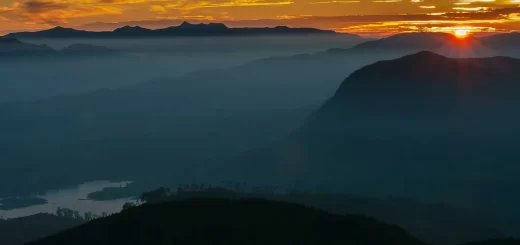London Wetland inspires a luxury hotel
by Jetwing · Published · Updated
Part One. The Making of Vil Uyana

Thatched roofs for a vernacular style © Gehan de Silva Wijeyeratne
In the first part of a four-part article series, Gehan de Silva Wijeyeratne explains how the London Wetland Center became the inspiration for a small luxury hotel thousands of miles away in tropical Asia.
‘I think we can do this’ said Hiran Cooray a smile breaking across his face. As if to mark an important moment in the timeline, a Wren drilled the air with a quivering song. The heads of Phragmites reeds tossed in the air as a cool wintry breeze gusted across the reed-beds fringing a man-made lake. A flock of waterfowl from the ice frozen Arctic North clattered down onto the water. A network of sluices and channels maintained the levels of water to optimize the numbers and species diversity of waterfowl. We were at the London Wetland Center, now recognized as the foremost urban nature reserve in Europe. It is tucked to the south of an important arterial river, the River Thames, on the outskirts of arguably the world’s greatest city. It is not far from Heathrow and overhead both birds and people fly on their migrations.
Hiran and I had arrived with his sister and fellow director Shiromal, a passive but keen supporter of the Jetwing Vil Uyana project. Her enthusiasm was being tested in the wintry chill and a flicker of uncertainty crossed her face as she surveyed the wetland misted over in winter’s bleakness. Being an astute business woman, she knew the need to take risks and support a bold initiative being championed by her brother and the team at Jetwing to attempt something not done before by a tourism project. The plan was to create a man-made wetland upon which to site a small luxury hotel; an idea imported into a tropical context inspired by the work of European conservationists.
Her father the late Herbert Cooray also shared an unsaid sense of disquiet with our ideas. Herbert, the man who built Sri Lanka’s leading luxury hotel chain had followed his father’s footsteps and gone into construction. He had started his own construction company and knew more than any hotelier about the complexities of construction. ‘Do you have any idea of how much this is going to cost and how much earthwork is involved?’ He challenged me over lunch at the staff dining room at Jetwing House. I did, having done an undergraduate degree in civil engineering. Subsequently having worked in banking, I was under no illusion that the cost and complexity were not to be underestimated. If the late Herbert Cooray had his doubts he knew to keep them to himself. He had installed his son Hiran, a young 25 year old, as Managing Director and knew that there are times it was best not to second guess and to let Hiran chart his own destiny. With an anxious look at her watch and murmuring she had got the picture, Shiromal fled to central London for somewhere warmer and more chic, leaving Hiran and me explore the London Wetland.
My connection to the London Wetland goes back to when it was a series of aesthetically challenged concrete reservoirs with short cropped grassy embankments managed by Thames Water. I lived in West Kensington and would take a tube to Hammersmith and go birding there in the winter to look for winter migrants such as the Goosander, a strange duck with a hook-tipped bill. ‘You won’t be able to come here before long’ said the burly man examining the Thames Water birdwatching permit I had presented. ‘Them are taking the site’. Who are ‘them?’. I gathered that the Wildfowl and Wetland Trust (WWT) were taking over the site and converting it into a wetland reserve. ‘Are you done yet?’ I would phone and ask them periodically thinking it would not take long to send in a few bulldozers, excavate some lakes and build some bird-watching hides. They must have been impressed with my interest as they invited me for a media preview before it was officially opened by HRH Prince Charles. I emailed a few friends in Sri Lanka that it would be a great idea to convert the then disused race course in Colombo into a wetland reserve.
I left London for Sri Lanka in 1999 before the London Wetland Center opened to the public. Having helped to launch a new bank, Nations Trust Bank, in 2002 I was with Jetwing, a family controlled conglomerate with diverse interests and a strong track record in luxury hotels. A decision had been made to develop a block of land they owned in Sigiriya. A group of us left one morning from Jetwing House, leaving early to avoid the capital’s coils of traffic that strangled it, heading north leaving behind the wet western province to enter the dry lowlands but never far away from the paddy fields which sped past us like an unwinding ribbon. We arrived at a barren and soulless site. The yellowing grass all life drained from it on a sun baked earth, reflected the tropical sun making us squint. In the distance, was Sigiriya, puncturing the flatness of the dry plain with sheer faced rock sides gusting up thermals for Shaheen Falcons to ride at heroic speeds inflicting death like an arrow released from heaven. Shimmering in the haze, this dramatic archaeological site was robbed by the distance of holding any ‘presence’.
At a meeting of the Directors next day I offered my opinion. The site scored zero. It needed something done. A quite reflective silence fell upon the room as everyone started to think. I suggested we follow what the London Wetland had done and create a wetland nature reserve and build a luxury hotel in it. Much to my surprise the idea was eagerly seized by Hiran and Shiromal, Ruan Samarasinha and the other directors.
Read also Part Two
Source : WSI





